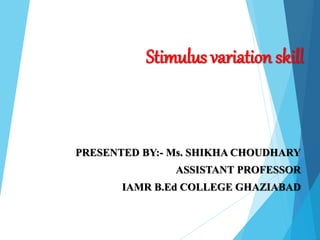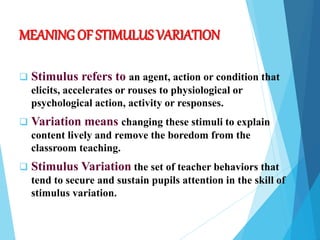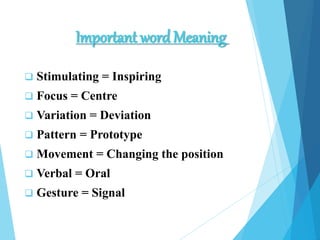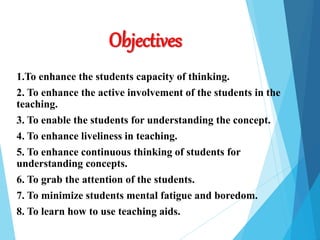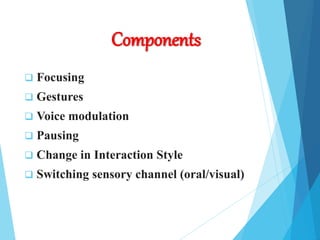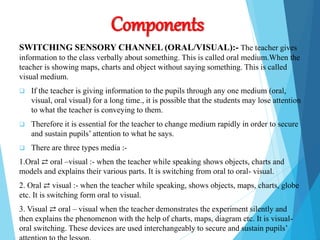The document discusses stimulus variation, which refers to changing teaching methods and stimuli to engage students and reduce boredom. It outlines several components of stimulus variation, including focusing students' attention verbally or through gestures, using voice modulation and pausing, switching between oral, visual, and combined sensory channels, and changing interaction styles between teacher and students or among students. The objectives are to enhance student thinking, involvement, understanding, and attention while minimizing fatigue. Examples provided are using gestures, varying speech patterns, demonstrating concepts visually, and facilitating student discussions.
